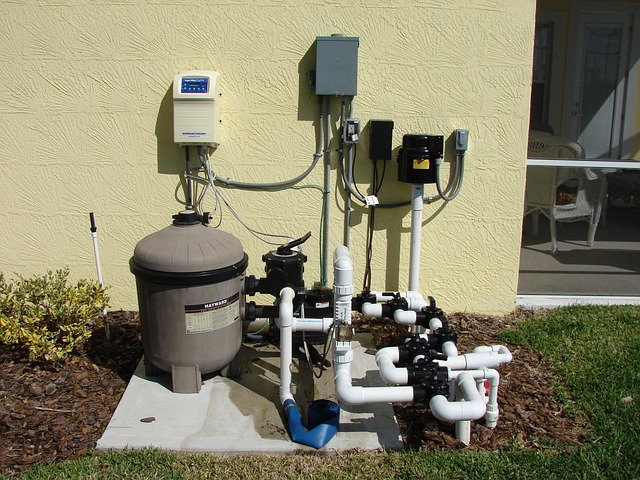Water storage tanks provide solutions for water storage
Water storage tanks offer practical solutions for collecting, storing, and preserving water for various applications. Whether used in residential, commercial, agricultural, or industrial settings, these containers play a crucial role in water management strategies worldwide. From ensuring water availability during shortages to supporting sustainable water conservation efforts, storage tanks have become essential infrastructure components for many properties and facilities.

Types of Water Storage Tanks
Water storage tanks come in numerous configurations designed to meet specific storage needs. Above-ground tanks are widely used in residential settings where space permits, offering easier installation, maintenance, and visual monitoring of water levels. Underground tanks provide space-saving benefits by utilizing subsurface areas while protecting water from temperature fluctuations and sunlight exposure that can promote algae growth.
Sectional tanks consist of modular panels assembled on-site, making them ideal for locations with limited access or where traditional tank installation would be difficult. These can be expanded as needed, offering flexibility for growing water storage requirements. Pillow tanks (also called bladder tanks) provide portable, temporary storage solutions that can be deployed and collapsed as needed, making them valuable for emergency situations or seasonal water storage.
Rainwater harvesting tanks specifically collect and store precipitation from rooftops and other surfaces, supporting sustainable water practices. These typically include filtration systems to remove debris and potential contaminants before storage. In agricultural settings, irrigation tanks store large volumes of water for controlled distribution to crops, helping farmers manage water resources effectively during dry periods.
Water Tank Material Options
The material composition of water storage tanks significantly impacts their performance, longevity, and suitability for specific applications. Plastic tanks, typically made from polyethylene or polypropylene, offer lightweight, corrosion-resistant options that are relatively inexpensive and easy to transport. These tanks resist most chemicals but may degrade when exposed to prolonged UV radiation unless properly treated with UV inhibitors.
Stainless steel tanks provide exceptional durability with resistance to corrosion, making them suitable for storing potable water. Though initially more expensive than plastic alternatives, their longer lifespan and minimal maintenance requirements often result in better long-term value. Concrete tanks offer excellent structural stability and temperature regulation properties, keeping stored water cooler in hot climates. These tanks can be constructed on-site or delivered as precast units, and they typically last decades with proper installation.
Fiberglass reinforced plastic (FRP) tanks combine the lightweight nature of plastic with enhanced strength from embedded glass fibers. These tanks resist chemical corrosion and UV degradation while maintaining structural integrity. For specialized applications, galvanized steel tanks feature zinc coatings that protect against rust and oxidation, though they eventually require replacement as the protective coating wears down over time.
Installing and Maintaining Water Storage Tanks
Proper installation of water storage tanks begins with site preparation, which includes creating a level foundation that can support the tank’s weight when filled. For above-ground tanks, this typically involves pouring a concrete pad or preparing a compacted gravel base. Underground tanks require excavation, proper bedding material, and consideration of groundwater conditions to prevent tank flotation when empty.
Plumbing connections must include appropriate inlet and outlet configurations, overflow systems, and venting to prevent pressure buildup. Many installations benefit from filtration systems at both the inlet and outlet to ensure water quality. Depending on local regulations, backflow prevention devices may be required to protect municipal water supplies from potential contamination.
Maintenance practices extend tank lifespan and preserve water quality. Regular inspection schedules should check for cracks, leaks, or signs of structural compromise, particularly at seams and connection points. Tanks should be cleaned periodically according to the manufacturer’s recommendations, with frequency determined by water source quality and usage patterns. Interior cleaning might require professional services for larger tanks or confined space entry protocols for safety.
Water quality monitoring helps identify potential issues before they affect the entire stored supply. This includes testing for bacterial growth, sediment accumulation, and chemical parameters relevant to the water’s intended use. Many tank owners implement simple filtration systems to improve and maintain water quality, while others add appropriate treatment methods like UV sterilization or chlorination depending on the application.
Water Storage Tank Applications
Water storage tanks serve diverse purposes across various sectors. In residential settings, they provide backup water supplies during service interruptions, support rainwater harvesting systems, and supply water for irrigation needs. Many homeowners in rural areas rely entirely on storage tanks connected to wells or delivery services for their household water.
Commercial and industrial facilities use storage tanks for process water, fire suppression systems, and cooling tower operations. These applications often require specialized tank designs that comply with industry standards and regulatory requirements. Agricultural operations depend on storage tanks to manage irrigation schedules efficiently, storing water during abundant periods for use during dry spells.
Municipal water systems incorporate large-scale storage tanks to balance supply and demand fluctuations, maintain consistent pressure throughout distribution networks, and ensure emergency reserves are available. These tanks often become recognizable landmarks in communities, painted with distinctive colors or local imagery while serving their functional purpose.
Sizing and Capacity Considerations
Determining appropriate tank size requires analysis of several factors including daily water consumption patterns, available space, budget constraints, and intended applications. Residential systems typically calculate needs based on household size, with estimates ranging from 50-100 gallons per person per day for comprehensive backup systems.
For rainwater harvesting, collection area (typically roof surface) and local precipitation patterns determine optimal capacity. Agricultural applications consider irrigation requirements based on crop types, acreage, and climate conditions. Commercial and industrial systems must account for both routine operational needs and emergency reserves.
Most experts recommend including a buffer capacity beyond calculated minimum requirements to accommodate unexpected usage increases, longer-than-anticipated shortage periods, or future expansion needs. This forward-thinking approach prevents the need for costly system upgrades or additions as requirements evolve.
In regions prone to specific challenges like drought or natural disasters, larger capacity systems provide greater resilience and self-sufficiency. The peace of mind that comes from adequate water storage capacity often justifies the additional investment for many property owners and facility managers, particularly in areas with unreliable municipal supplies.
Conclusion
Water storage tanks represent essential infrastructure for reliable water access across numerous applications. By understanding the various types, materials, installation requirements, and maintenance practices, users can select and implement systems that best meet their specific needs while ensuring longevity and performance. As water resource management becomes increasingly important globally, these storage solutions will continue to play a vital role in conservation efforts and supply reliability.




